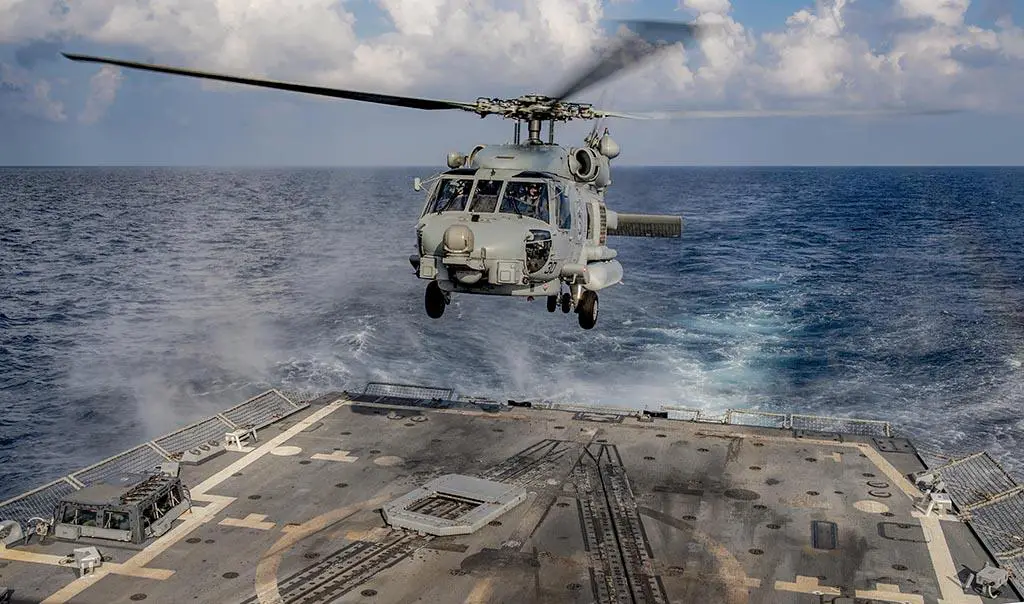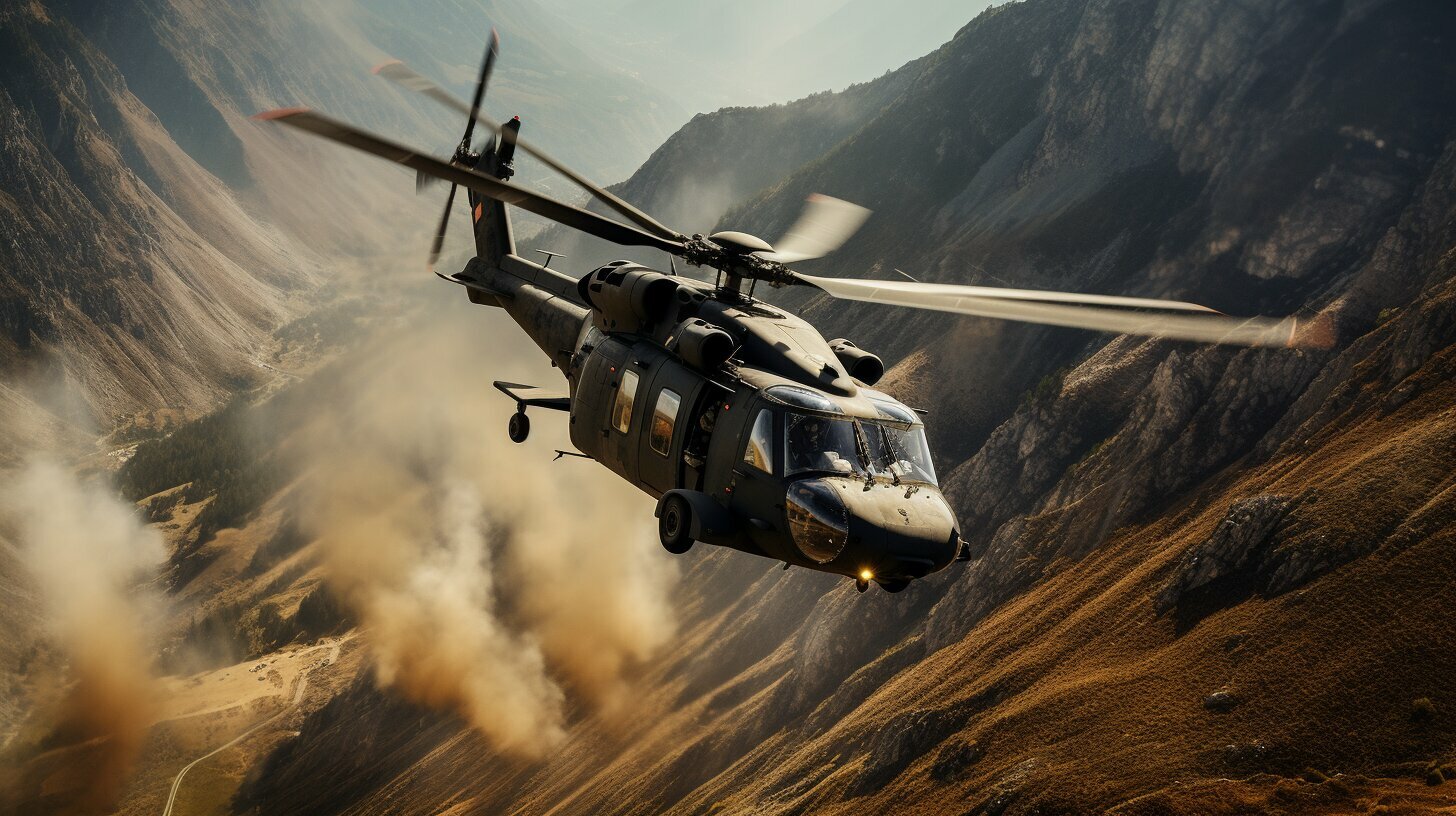
Why Army Helicopters Have Native American Names
Army helicopters have been given Native American names for decades, and this has been a widely accepted naming convention. These names have a historical significance and cultural symbolism that pays homage to the indigenous people of America. In this article, we will explore the reasons behind why Army helicopters have these names and the impact this has had on American history.
The tradition of naming Army helicopters after Native American tribes began in the early 1950s and was heavily influenced by World War II veterans who had fought alongside Native Americans. They recognized the bravery and contributions of these indigenous soldiers and wanted to honor their legacy through helicopter naming conventions. Today, the tradition continues, and each new helicopter is given a name that reflects Native American history and culture.

Historical Background of Army Helicopter Naming Convention
The Army Helicopter naming convention has a rich history that dates back to the early days of military aviation. The tradition of using Native American names for Army helicopters began in the late 1940s and early 1950s, when the Army started using helicopters in combat operations.
At the time, Army leaders wanted to come up with a naming convention that honored the indigenous people of America and also reflected the unique capabilities of the helicopters. The use of Native American names seemed like an appropriate way to achieve both goals.
Initially, the Army named their helicopters after Native American tribes, such as the Sioux, Apache, and Comanche. However, as the years went on, the naming convention became more specific, with helicopters being named after individual Native American leaders, warriors, and cultural figures.
The Role of Col. Frank Gregory
One of the key figures in the development of the Army helicopter naming convention was Col. Frank Gregory. Gregory was a World War II veteran who went on to become a helicopter pilot and served as the commander of the Army’s Aviation School at Fort Rucker, Alabama, in the early 1950s.
It was Gregory who first proposed the idea of using Native American names for Army helicopters. He believed that the Native American culture had a special significance for the Army because of the historical contributions of indigenous people to the military.
Gregory also believed that the use of Native American names for helicopters would give them a distinctive identity and help build pride and esprit de corps among Army aviators.
Evolution of the Naming Convention
Over time, the Army helicopter naming convention evolved to include a wider range of Native American tribes and cultural figures. In addition to using names of individual warriors and leaders, the Army also started using names of animals and natural elements that held special significance for Native American cultures.
One notable example is the Apache helicopter, named after the Apache tribe of the southwestern United States. The Apache people have a long history of warrior culture and are known for their skill and bravery in battle, making the name an appropriate choice for a combat helicopter.
Another example is the Chinook helicopter, named after the Chinook people of the Pacific Northwest. The Chinook are known for their seafaring traditions and their reverence for nature, making the name a fitting tribute to the helicopter’s ability to operate in various environments.
| Examples of Named Helicopters | Explanation of Name |
|---|---|
| UH-1 Iroquois (Huey) | Named after the Iroquois Confederacy, a powerful Native American alliance that played an important role in the American Revolution. |
| AH-64 Apache | Named after the Apache tribe of the southwestern United States, who were renowned for their warrior culture and bravery in battle. |
| CH-47 Chinook | Named after the Chinook people of the Pacific Northwest, who are known for their seafaring traditions and reverence for nature. |
The Army continues to use the Native American naming convention for their helicopters, with new names being added as new models are developed and deployed. Today, the tradition serves as a reminder of the important contributions of indigenous people to American history and culture.
Cultural Significance of Native American Names
The use of Native American names for Army helicopters recognizes and honors the significant contributions made by indigenous communities to American history and culture. Each name chosen for a helicopter holds a symbolic representation of the qualities and characteristics the Army believes are critical to its mission.
Native American tribes have a rich heritage and culture, and their languages are integral to their identities. The Army chose to use these names to represent the strength and resilience of the tribes, and to honor their sacrifices on behalf of the United States.
“The Army considers it a privilege to use these names as a means of recognizing the contributions of Native American communities. It is a small way to honor their legacy and to remember their sacrifices.”
Each name chosen for a helicopter represents a particular quality or characteristic, such as strength, power, or agility. The Army believes that these attributes are essential to the helicopters’ mission and reflect the values of the United States.
| Native American Name | Meaning | Representation |
|---|---|---|
| Apache | An indigenous tribe from the southwestern United States | Agility and speed in battle |
| Blackhawk | A chief of the Sauk tribe who fought for the British in the War of 1812 | Agility, power, and versatility |
| Chinook | A tribe from the Northwest coast of the United States and Canada | Strength, power, and endurance |
| Comanche | A tribe from the Great Plains region of North America | Agility and endurance in combat |
Each named helicopter is a tribute to the Native American communities and serves as a reminder of the valuable contributions these cultures have made to the United States. The Army considers it an honor to use these names and recognizes the importance of preserving the memory of these communities.
Other Notable Native American Names
Some other notable Native American names given to Army helicopters and their symbolic meanings include:
- Lakota: Named after the Lakota tribe, the Lakota helicopter symbolizes strength and endurance in combat missions.
- Cheyenne: Named after the Cheyenne tribe, the Cheyenne helicopter represents courage and bravery in battle.
The use of these names not only serves as a tribute to Native American culture but also promotes a sense of unity and respect among different cultures within the Army.
Controversies and Criticisms
The use of Native American names for Army helicopters has been a subject of controversy and criticism. While some view it as a way of honoring the indigenous people and their culture, others consider it to be cultural appropriation.
One argument against the naming convention is that it reduces Native American culture to a mere symbol, rather than acknowledging the complex and diverse nature of these tribes and their histories. Critics also argue that the use of Native American names reinforces stereotypes and perpetuates a romanticized version of their culture.
On the other hand, supporters of the naming convention highlight the positive aspects of using Native American names for Army helicopters. They argue that it showcases the contributions of Native Americans to American history and culture, and serves as a way of preserving their heritage.
Regardless of which side of the debate one falls on, it’s important to acknowledge and respect the opinions and perspectives of all parties involved. The use of Native American names for Army helicopters is a complex issue that requires careful consideration and open dialogue.
Frequently Asked Questions
Here are some frequently asked questions regarding Army helicopter names and their Native American origin:
How are the names selected?
The process for selecting names for Army helicopters varies, but generally involves consultation with representatives from Native American tribes. The names are chosen based on their cultural significance and relevance to the helicopter’s purpose or mission.
Are there any regulations or guidelines in place for naming Army helicopters?
Yes, there are specific guidelines and regulations in place for naming Army helicopters. According to Army Regulation 70-28, the names must be “culturally appropriate,” and cannot be derogatory or offensive. The naming process must also involve consultation with Native American tribes and must be approved by the Army Naming Board.








